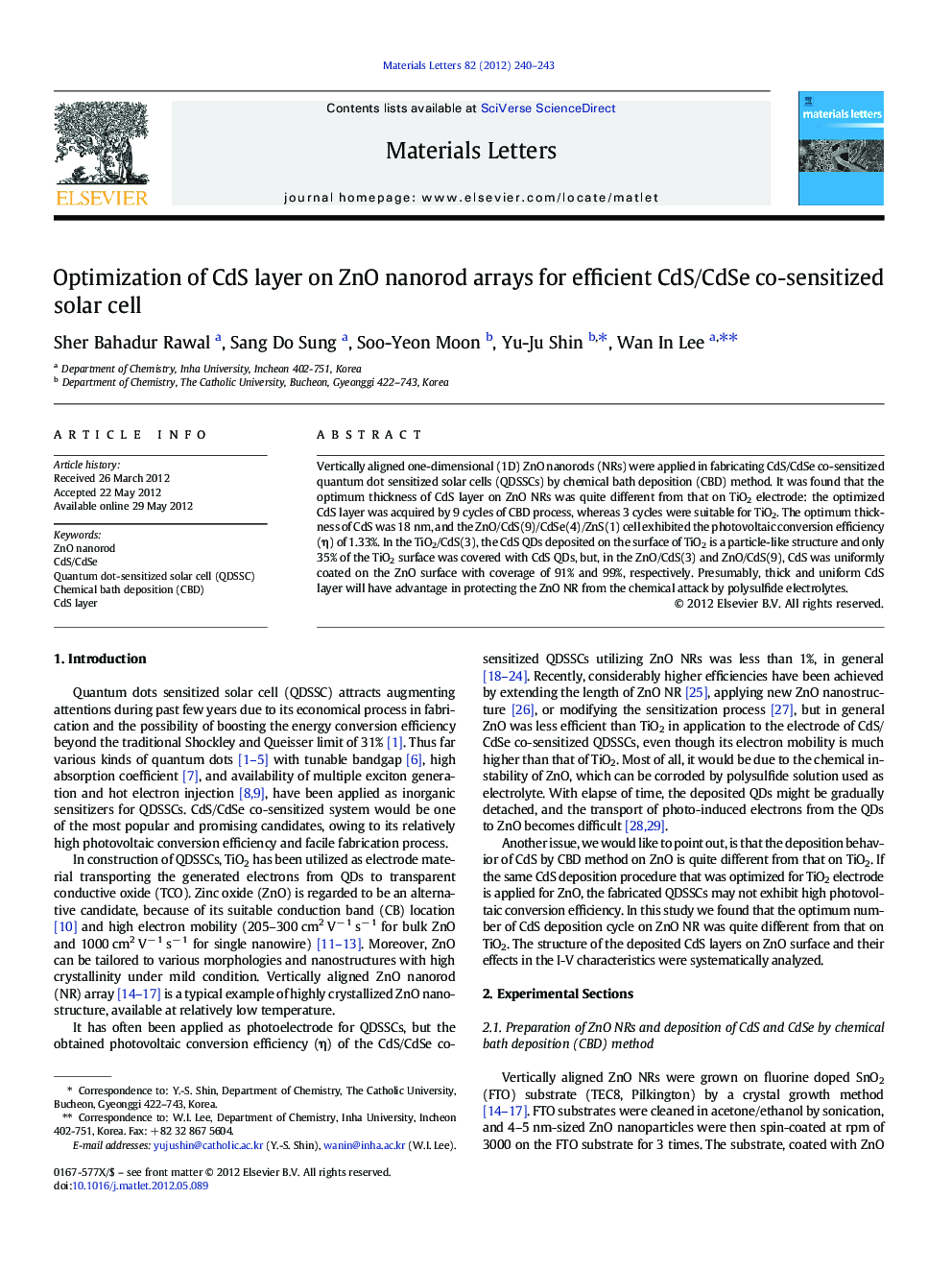| Article ID | Journal | Published Year | Pages | File Type |
|---|---|---|---|---|
| 1646584 | Materials Letters | 2012 | 4 Pages |
Vertically aligned one-dimensional (1D) ZnO nanorods (NRs) were applied in fabricating CdS/CdSe co-sensitized quantum dot sensitized solar cells (QDSSCs) by chemical bath deposition (CBD) method. It was found that the optimum thickness of CdS layer on ZnO NRs was quite different from that on TiO2 electrode: the optimized CdS layer was acquired by 9 cycles of CBD process, whereas 3 cycles were suitable for TiO2. The optimum thickness of CdS was 18 nm, and the ZnO/CdS(9)/CdSe(4)/ZnS(1) cell exhibited the photovoltaic conversion efficiency (η) of 1.33%. In the TiO2/CdS(3), the CdS QDs deposited on the surface of TiO2 is a particle-like structure and only 35% of the TiO2 surface was covered with CdS QDs, but, in the ZnO/CdS(3) and ZnO/CdS(9), CdS was uniformly coated on the ZnO surface with coverage of 91% and 99%, respectively. Presumably, thick and uniform CdS layer will have advantage in protecting the ZnO NR from the chemical attack by polysulfide electrolytes.
► Vertically aligned ZnO nanorods (NRs) were successfully applied for CdS/CdSe co-sensitized solar cells. ► Deposition behavior of CdS on ZnO is quite different from that on TiO2. ► Optimum thickness of interfacial CdS layer on ZnO NRs is 18 nm, acquired from 9 cycles of CBD process.
